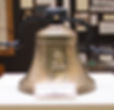
SECOND FLOOR FEATURES EXHIBITS RELATING TO THE FOLLOWING TOPICS:
History of Claiborne Parish Education--Pioneer Days/Academy Period/Early Public School Period, Clyde B. Kitchens Trophy Room,
A Victorian Parlor, Medical Room with Medical/Dental/Optical/Surgical Artifacts, A Hotel Suite, a 1925 Ford Depot Hack, a late 1800s Carriage,
a General Store, Lieutenant General David Wade Military Room, Maritzky's Store, Geoffrey Beene Fashions and MORE!
*DOUBLE CLICK ON THE THE SLIDE DECK TO OPEN GALLERY.

An elegant beaded purse could be purchased in a general store.

This mantle displays shoes owned by the Fords.

General stores sold all kinds of medicines, tonics, and remedies.

An elegant beaded purse could be purchased in a general store.
The General Store
Out of necessity, country stores or general stores, started “popping up” during the colonial period for the many pioneers who lived away from bigger cities. General stores in the 1800s were not just the place to buy groceries, clothing, tools and seed. They often served as a social center and post office. Stacked in shelves and on top of the counters were coffee, teas, spices, hard candies, denim clothing, sewing needles and more. No space within a general store was left empty.

The 1875 Victorian Parlor furnishings are a gift from Mary Riese of New Orleans.

The marble-topped etagere displays many beautiful artifacts.

This pretty Pittsburg lamp is hand-painted.

The 1875 Victorian Parlor furnishings are a gift from Mary Riese of New Orleans.
The Victorian Parlor
The very “well-to-do” homes during the Queen Victoria Period were lavishly decorated. The Parlor displays the ornate Renaissance Revival furnishings that were a gift from Mary Riese of New Orleans. The furniture was purchased by Mr. and Mrs. Denis Sirera, their parents in 1875. The parlor includes a settee and chairs upholstered with a rich red damask, an elaborately carved rosewood etagere, a hand-painted Pittsburg lamp, an Ansonia clock, and Paris porcelain vases.

The Medical Room features medical, dental, and optical artifacts dating from 1800s to early 1900s.

The old cabinet displays pharmaceutical relics--prescriptions, scales, bottles of medicine and much, much more.

These old crutches and a hand-carved artificial leg with painted toenails assisted the handicapped.

The Medical Room features medical, dental, and optical artifacts dating from 1800s to early 1900s.
The Medical Room
Rural “country doctors” in the 1800s had no vaccines, no laboratory tests, and not many effective medicines. However, they were responsible for treating a wide range of medical problems including broken bones, wounds, chronic conditions, and acute sicknesses such as cholera, yellow fever, typhoid fever, diphtheria, malaria, and tuberculosis. Emergency surgery was harsh with no anesthetic and crude surgical tools. The procedure was often left to the work of city or hospital doctors when it couldn’t be avoided. Featured in the medical room are medical, dental and optical artifacts used by Claiborne Parish physicians from the late 1800s to early 1900s.

This "Guns of War" cabinet displays guns from WW II.

These uniforms and medals are displayed to honor Claiborne Parish veterans.

This wall features Larry Sale, the most decorated WW I soldier from Louisiana.

This "Guns of War" cabinet displays guns from WW II.
Lieutenant General
David Wade
Military Room
The Military Room is for all military enthusiasts. It is named for Lieutenant General David Wade who served in World War II, the Korean War, and
Viet Nam Wars. Artifacts from World War I, World War II, The Korean Conflict and Viet Nam are on display.

The hotel room features an Eastlake bedroom suite owned by Herbert and Ruth Ford.

An Empire Victorian sofa is also displayed in the hotel room.

An Aladdin lamp, bowl and pitcher, and dresser set with mirror and brush are displayed on the Eastlake dresser.

The hotel room features an Eastlake bedroom suite owned by Herbert and Ruth Ford.
The Hotel Room
Stepping back to the 1800s, travelers would not have the amenities that are presently enjoyed. It was a time of armoires, chamber pots, a shaving mirror, quilts--not closets, indoor bathrooms, air conditioning, television and cell phones. The room’s main attraction is the ornate Eastlake bedroom suite of Herbert and Ruth Ford. Other items of the period include hand-made linens, quilts, vintage clothing and shoes, a Victorian Empire Sofa, and wax flowers.

Murals, by artist Mary Francis Robinson, depict what a one-room schoolhouse was like during the Pioneer Period.

The Homer Male College bell dates back to 1855.

Ruth Meadows Ford wore this dress for her graduation in 1912.

Murals, by artist Mary Francis Robinson, depict what a one-room schoolhouse was like during the Pioneer Period.
Education History Room
The large murals by Mary Frances Robinson depicting a “one-room” school house draw visitors to the Education History Exhibit. Artifacts on display represent the three periods of Claiborne Parish educational history: Pioneer, Academy and Public-School Periods. Some of the many artifacts include a graduation dress worn by Ruth Meadows Ford in 1913, a 1925 football helmet, The Homer Male College bell, circa 1955, and antique textbooks.